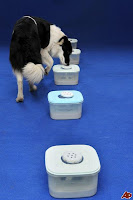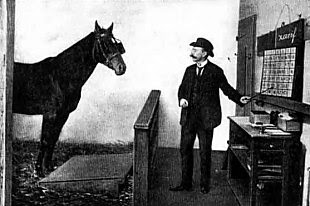I want to touch on something many people probably don’t know: Chocolate and grapes are poisonous to dogs! What?!?! That’s right, and I’m certain most people aren’t aware of, since my vet has recommended grapes as snacks for our dogs. But here it is, right here. And raisins too. OK, OK…just thought I should mention that.
First, chocolate is a toxin to canines. Dark chocolate is worse than milk chocolate by a factor of eight. In practical terms, one ounce of milk chocolate per pound of Fido’s body weight will kill him; whereas it would take only 1/8 oz of dark chocolate per pound of body weight to kill a pooch. So keep your Cadbury hidden if you know what’s good for your pet.
 Veterinarian Tina Wismer, senior director of veterinary outreach and education at the American Society for the Prevention of Cruelty to Animals (ASPCA) says, “Dogs love chocolate and they are gluttons. They won’t stop eating it.”
Veterinarian Tina Wismer, senior director of veterinary outreach and education at the American Society for the Prevention of Cruelty to Animals (ASPCA) says, “Dogs love chocolate and they are gluttons. They won’t stop eating it.”
She goes on to say that over the past few years, there has been a slight increase in the number of chocolate-caused deaths and a larger increase in the number of dogs ingesting life-threatening doses of methylxanthine, which is found in chocolate
 Then there are grapes. Researchers have only found out about grape and raisin toxicity to dogs over the last four or five years. Apparently the fruit can cause renal failure in canines, although it is currently unknown why. Only three-quarters of a pound of grapes is necessary to cause very significant toxicity in a dog. Both seedless and seeded grapes can cause problems, with symptoms including diarrhea, vomiting, weakness, not eating, increased drinking, and abdominal pain. Undigested pieces of grapes or raisins may be found in the stool. Acute renal failure develops within 48 hours of ingestion.
Then there are grapes. Researchers have only found out about grape and raisin toxicity to dogs over the last four or five years. Apparently the fruit can cause renal failure in canines, although it is currently unknown why. Only three-quarters of a pound of grapes is necessary to cause very significant toxicity in a dog. Both seedless and seeded grapes can cause problems, with symptoms including diarrhea, vomiting, weakness, not eating, increased drinking, and abdominal pain. Undigested pieces of grapes or raisins may be found in the stool. Acute renal failure develops within 48 hours of ingestion.
So, although this a blog about human health, with dog being man’s best friend, I thought many of you would appreciate hearing what kinds of household items can take out your beloved pooch. Make note and poison-proof your house–you and Butch should be rollin’ for a few more years that way.



















